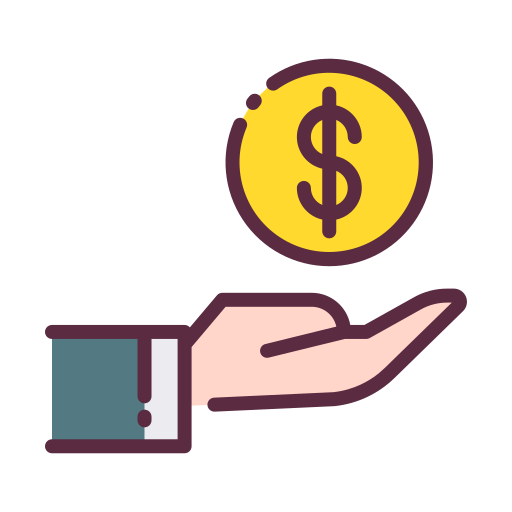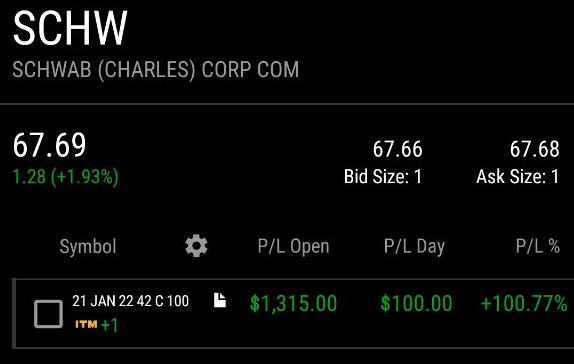Just a few days back, I overheard someone sharing about options, and all the great things about what options can do.
And I mostly agree.
Options are great, and I love it. After all, it played a huge role to getting to the results I have today.
However, it is also important to recognise the risks that most people ought to know before they use options.
Here are some of the questions that could come across someone's mind.
- Yes, selling options can bring your a monthly income - but what if the options get exercised?
- Yes, there are strategies with a 90% win rate - but what is the true risk here?
- Yes, buying call options have a lower capital outlay - but what are the risks involved?
I felt that these MUST be addressed before anyone, especially beginners, dabble into the world of options - so that they actually have a realistic expectation when it comes to using options in their portfolio.
After all, it is easy to be persuaded by people who show that 100% profits on their call options, without understand the possible risks involved.
So let's address the risk one by one.
And at the end of this blog post, I am going to share with you a free resource on the option strategies that I used.
(Yes, you read that right. Its free - no credit card, no email, no nothing.)
You Can Get Income From Selling Options

This is definitely true, because I have been doing these for years - collecting cash flow very month from selling cash-secured put options.
But, while many people paint the very rosy picture of selling options for cash flow - there is a cavaet.
I generally only recommend selling put options for those with a larger capital.
Why?
We need to first address what does selling a put option means.
Selling a put option means that you promise to buy 100 shares at a strike price before an expiry date. Because of that promise, you get paid an "income", called an option premium.
Example: I sold a put option on PYPL at a strike price of 240 which expires at 24 days. In return, I received an option premium of $490. How much of PYPL shares am I promising to buy?
a. $240
b. $2,400
c. $24,000
Well, the answer is 100 X $240 = $24,000. Remember that selling put options generally means 100 shares.
This means that if the option gets exercised, you need to buy $24,000 worth of PYPL shares.
For a sell put option - being exercised means you are forced to buy that 100 shares of the undyling stock. After all, that's the promise that you made.
You can think of selling options like how insurance companies sell insurance policies.
When insurance company sells us an car insurance policy, we have to pay a premium. And in return of the premium, the company promises to pay for the damages in the event of an accident.
If the accident does happen, naturally the insurance company have to pay for the damages (just like how we had to pay for the PYPL stock in this example).
But if the accident doesn't happen, then the insurance company keeps the premium that you have paid for the policy.
Make sense? Now, lets reveal the next cold hard truth of options.
Collecting Five Figures In Cash Flow Every Month

Okay, so this one....is debatable.
Collecting $10,000 in option premium by selling put options is...
well...I am not saying it is impossible, but it is debatable.
The above example for PYPL is a real life example of my trade. (See below)

Screenshot of my trade from ThinkorSwim
So you can see that in the above, I was promising to buy $24,000 worth of PYPL and collected $490 in option premium.
And this was a cash secured put.
So let's do a calculation - if I wanted to collect $10,000 worth of option premium, I would have to sell around 20 put options on PYPL.
Now, 20 X 240 X 100 = $480,000
I would be promising to buy $480,000 worth of PYPL stocks.
(Now, I am only using PYPL as an example. We could have sold put options on a variety of stocks.)
So, for those that are collecting five figures in option premium by selling put options, it is either they have a huge portfolio that allows them to sell cash secured put options, or they were doing naked sell put options.
Naked put options means that we are promising to buy the 100 shares, but without having the capital to fulfill the promise of buying 100 shares.
For example, if I chose to sell the above PYPL put option without having $24,000 - that would be a naked put option.
Its kinda like an insurance company selling you an insurance policy that covers you for $250,000, but in reality, they don't have that much money on their balance sheet.
This is what burned most people when they sell naked put option - making promises that they cannot keep.
When the brokerage account see that you cannot fulfill your sell put promise, they will issue a margin call, and if you cannot fulfill the margin call, you end up wiping your account.
But here's what people might tell you about selling naked put option...
Naked Put Options With A 90% Win Rate!

Yes, yes...I have heard this so many times.
People claiming to have a 90% win rate.
It is true that a 90% win rate is possible. In fact, I can even tell you how it is done.
Remember that when we sell put options, the options gets exercised only when the share price is below the strike price.
If we chose a very far away strike price, then naturally, the probability of the option being exercised is lesser.
That is how people achieve their 90% win rate.
But here's the thing - a 90% win rate means little if you compare that associated risks and reward.
When we sell a put option that has a far away strike price (out of the money), we tend to collect lesser option premium. In fact, very little.
So to make up for the little option premium, people tend to sell a higher quantity of put options. This means, instead of selling one put option, they will sell five put options instead, i.e. they promise to buy 500 shares at the strike price.
But because of the "high" win rate - they believe that the share price will never fall below the strike price, their options won't get exercised, and they don't have to buy the 500 shares.
Yes, you have a 90% win rate. But if that 10% ever comes, and your options are close to getting exercised - your broker will issue you a margin call, if you don't have the cash in your brokerage account to pay for the 500 shares.
The point I need to illustrate is this - win rate is not everything. We need to consider the risks and rewards as well.
Let's illustrate this using a six-faced dice game.
- If the dice rolls anything other than 6, you make $100.
- If it rolls 6, you lose your house, your family and your kids.
Would you be telling me, "I have a 5 out of 6 chance of winning! Let's play this game!".
Probably not, because the risk of losing is SO MUCH bigger than winning that puny $100.
And this is a very serious problem of selling naked put options and it is why people can get their portfolio wiped overnight. All simply because that they thought they have a high "win rate".
(And in case you were thinking that you could set stop loss, I sincerely hope that the share price does not gap below your stop loss order.)
Buying Call Options Have Limited Risk

People refer this to paying a downpayment for your stocks.
And this can really increase your ROI, and I have had many call options making well above 50% returns. Even a 100% return is not really that uncommon.


Essentially, call options allows you to pay a smaller sum of money to "buy" 100 shares.
However, to say that it is less riskier than stock simply because it has a lower capital outlay...really depends on the how you define risk.
It is true that many people define risk as the maximum amount you can lose in the worse case scenario, i.e. the share price goes to zero.
So let's say I had $10,000 to invest in Facebook, and I had two choices:
- Buy $10,000 worth of FB stocks
- But $10,000 worth of FB call options
Now, the risk seems the same right? After all, the maximum we can lose is $10,000.
However, things change when we consider the probability of risk.
When we buy stocks, in order for us to lose the ENTIRE $10,000 - FB share price has to fall to zero.
What do think the possibility of that happening?
Well, chances are that is extremely slim.
However, for you to lose your entire $10,000 when buying call options?
That possibility is actually very real.
Why?
Because at the time of expiry, if the share price is below the strike price of the call option - you will lose the entire option premium.
Yes, the entire $10,000.
Of course, I am not saying this to scare you, after all, options gave me great returns.
My point of writing this blog post is to give you the cold hard truth of options so that you gain a better perspective, and to understand options better.
What's Next?

Like all financial instruments, everything has its risks.
Even as you are reading this, who knows you could fall off the chair you are sitting down on.
(I hope that didn't happen, but yes, everything have its risk)
The key to successful investing is not about eliminating the risks, but rather managing the risks.
As I said in the beginning of the blog post, I promised you a free resource on the option strategies that I used, detailing the entry and exit rules.
(Yes again, its free - no email, no credit card, nothing.)
But all I ask for is this - if you found this blog post useful, do me a favor and share this to spread the awareness on using options.
As promised, here's your access to the free resource.

The Options Investing Hub
The free resource to navigate options
